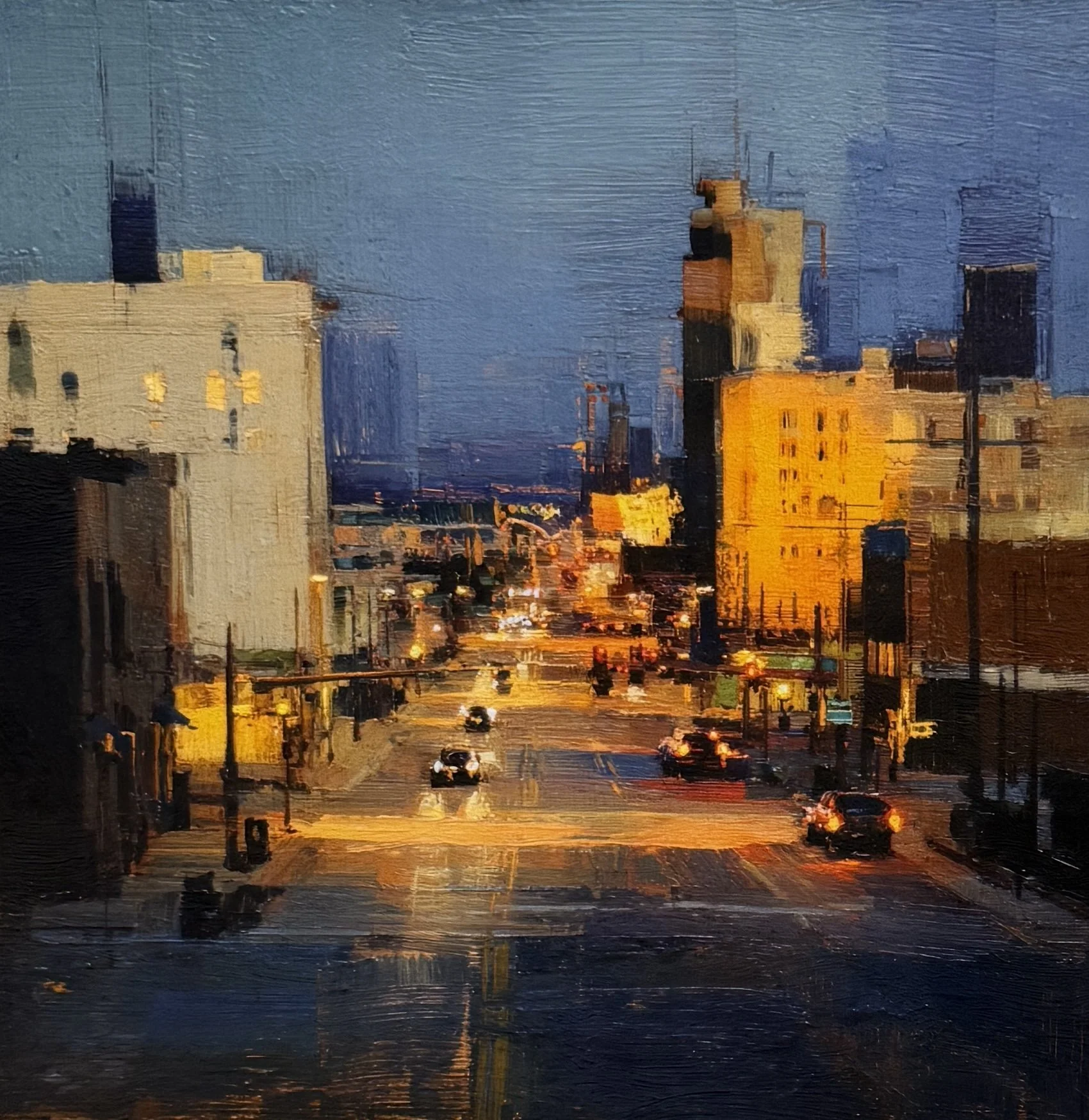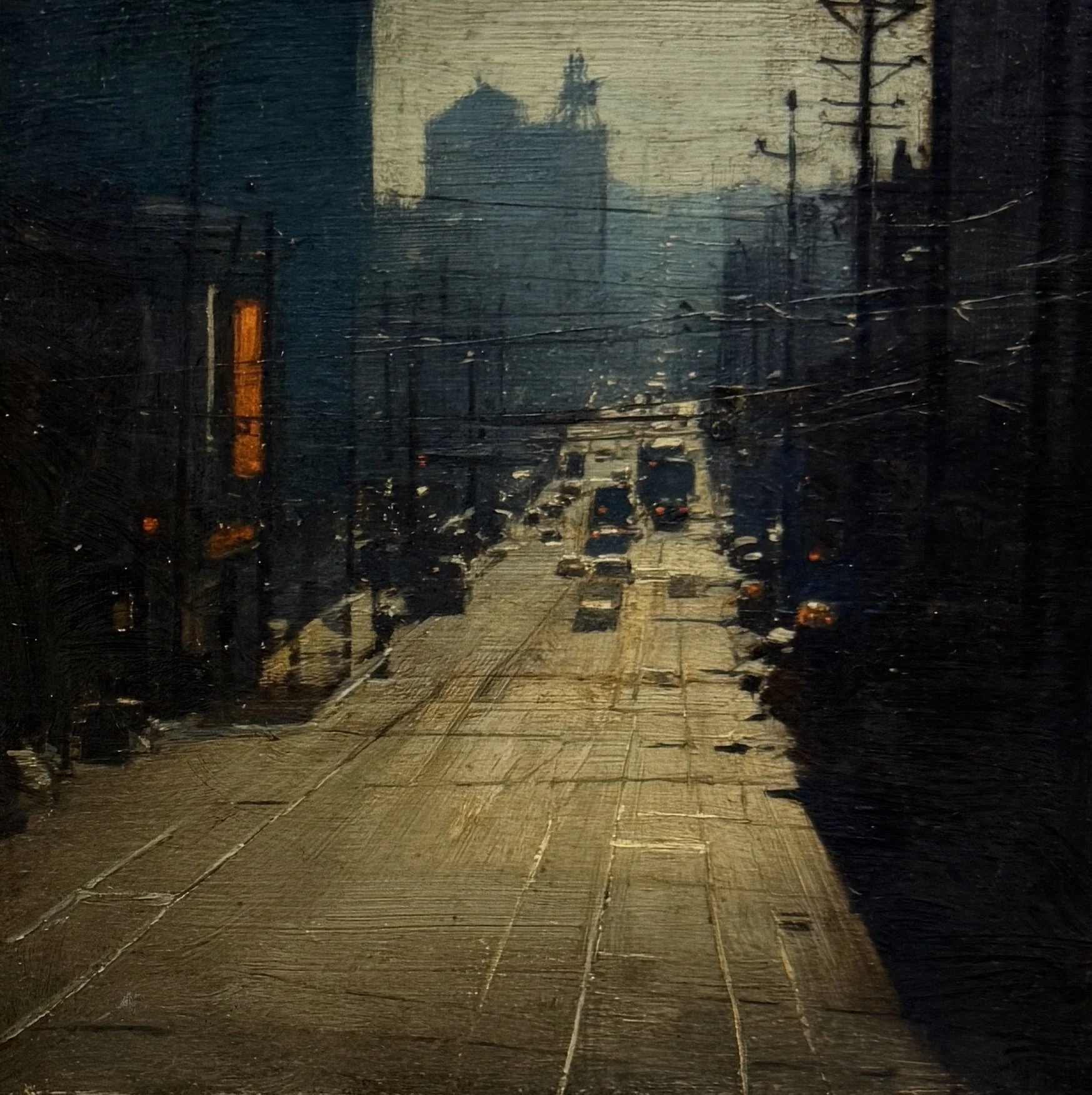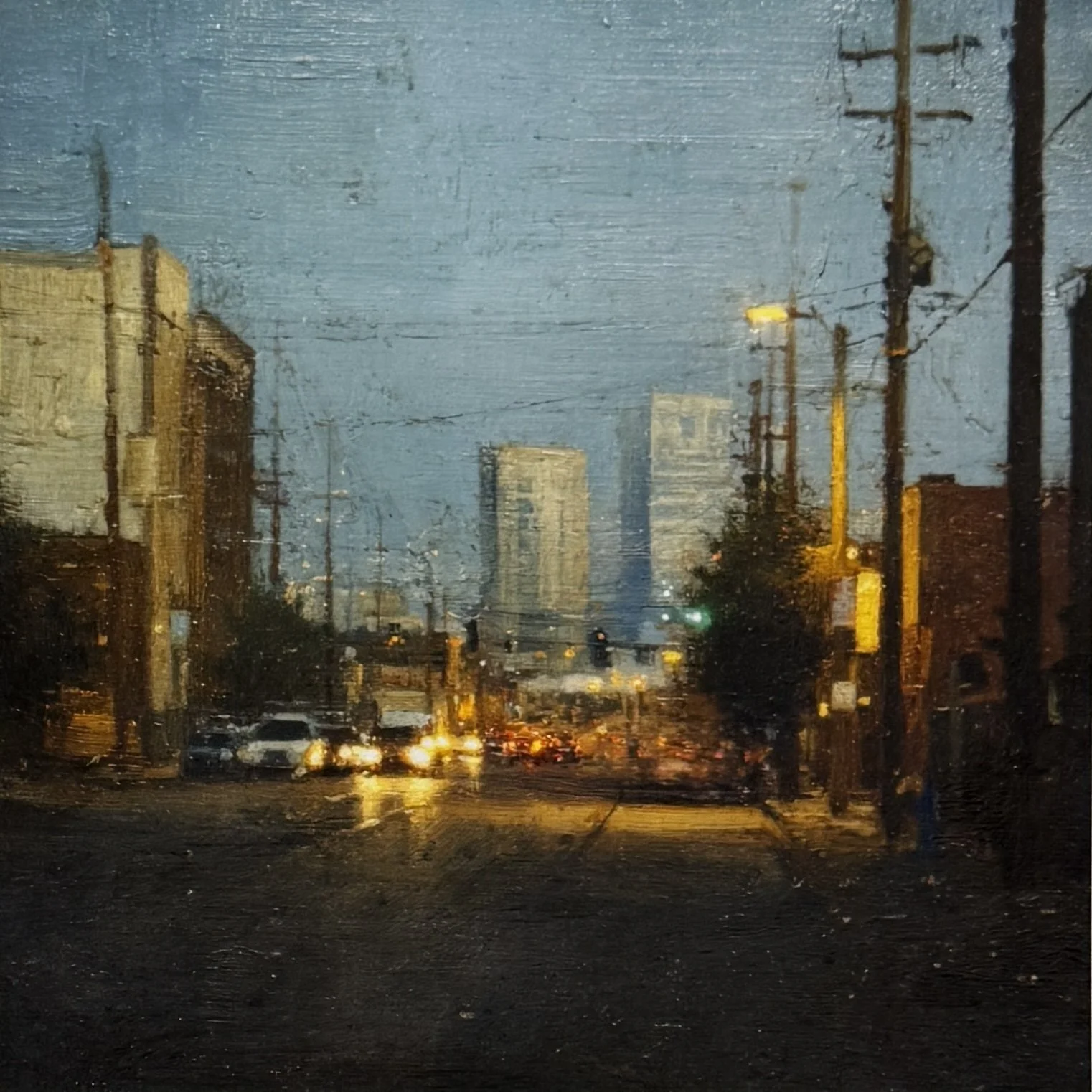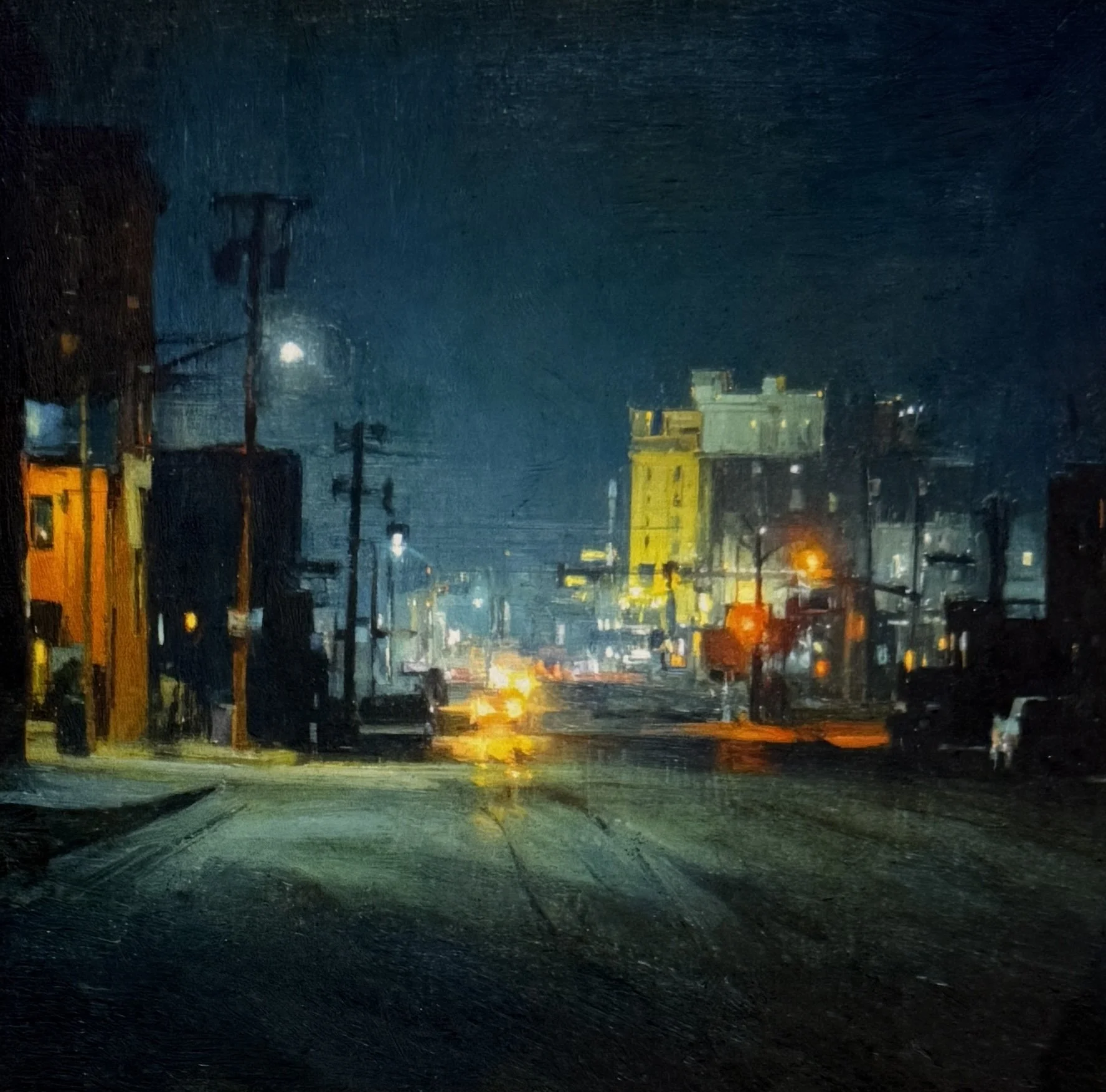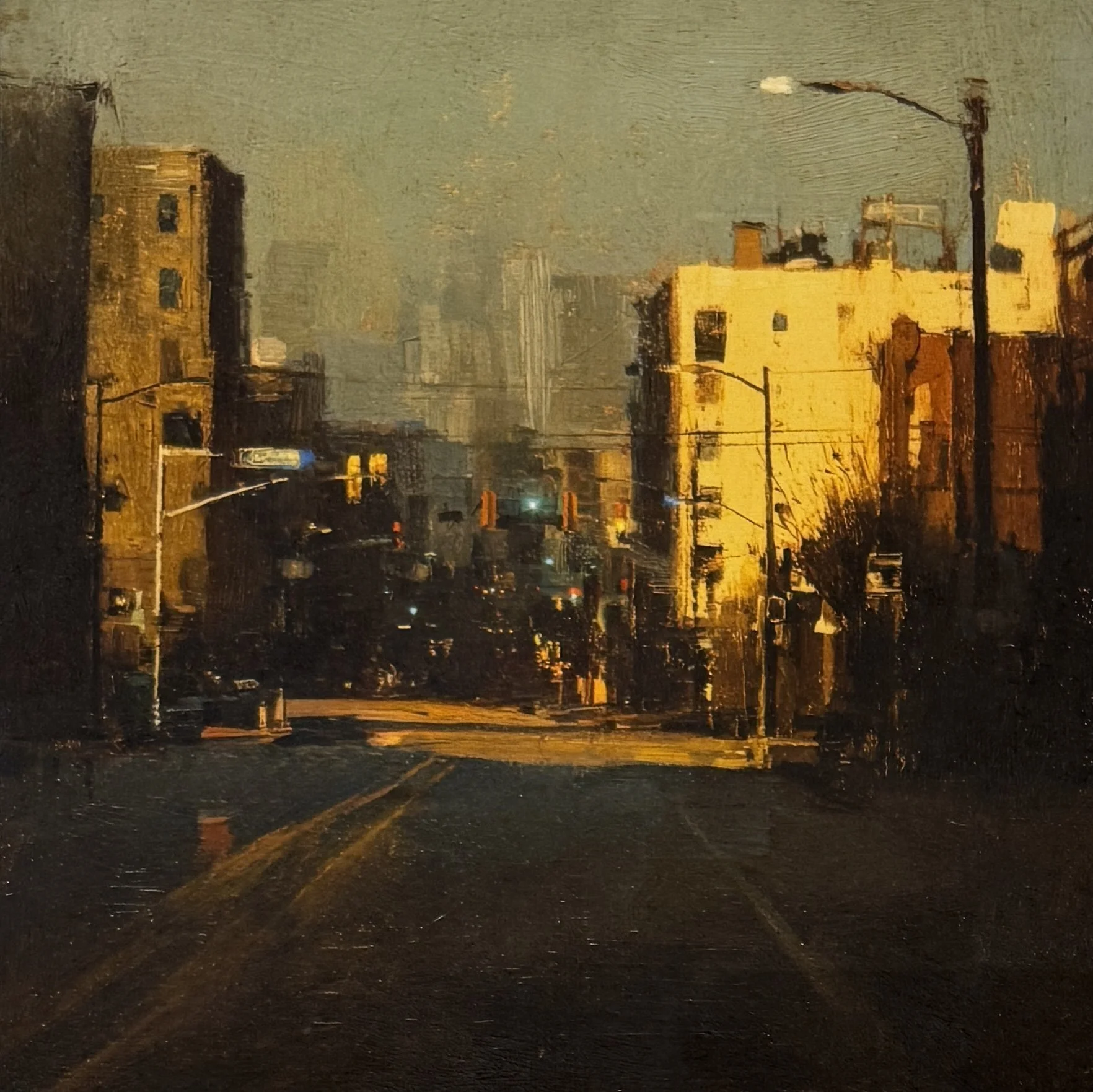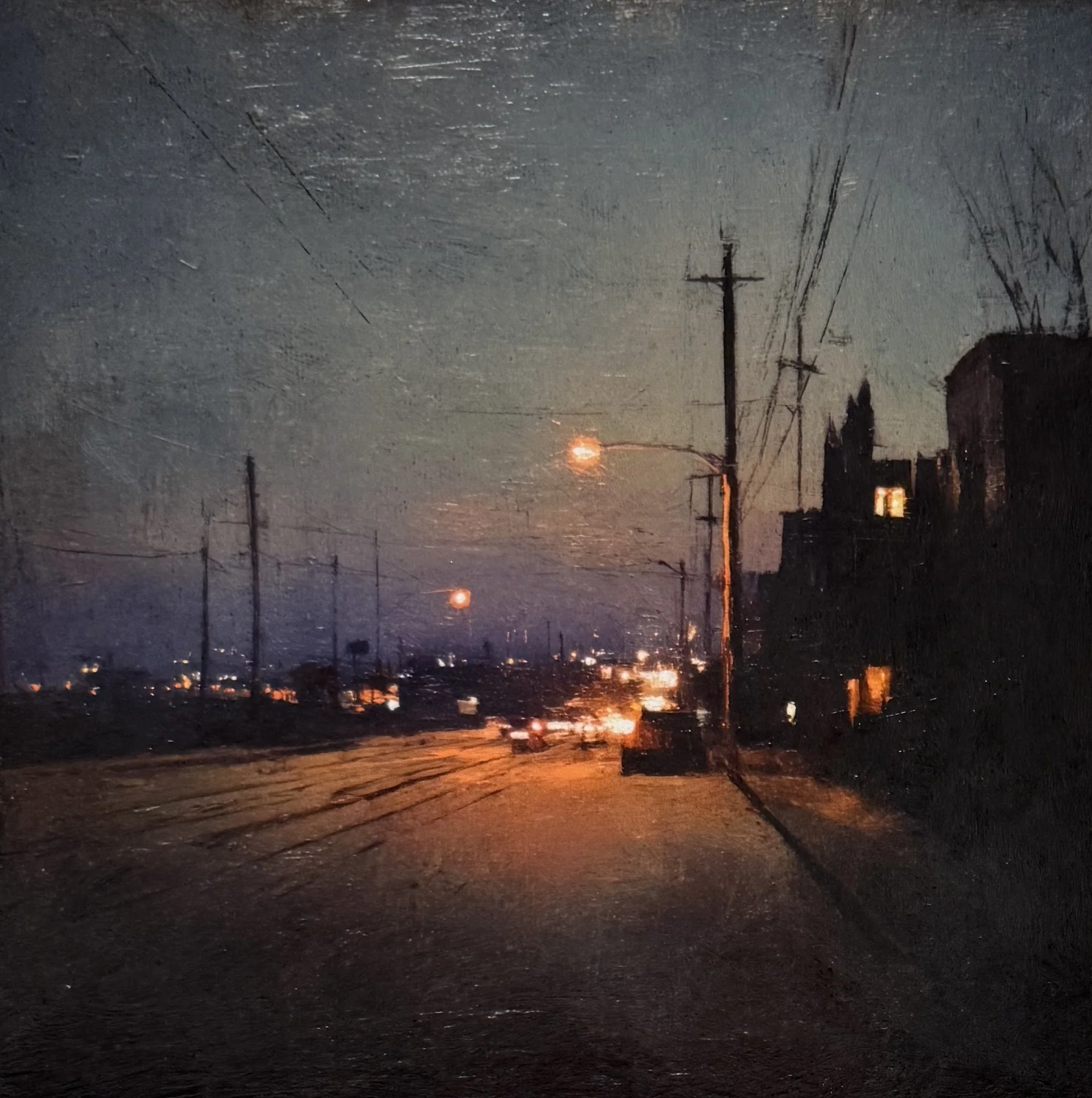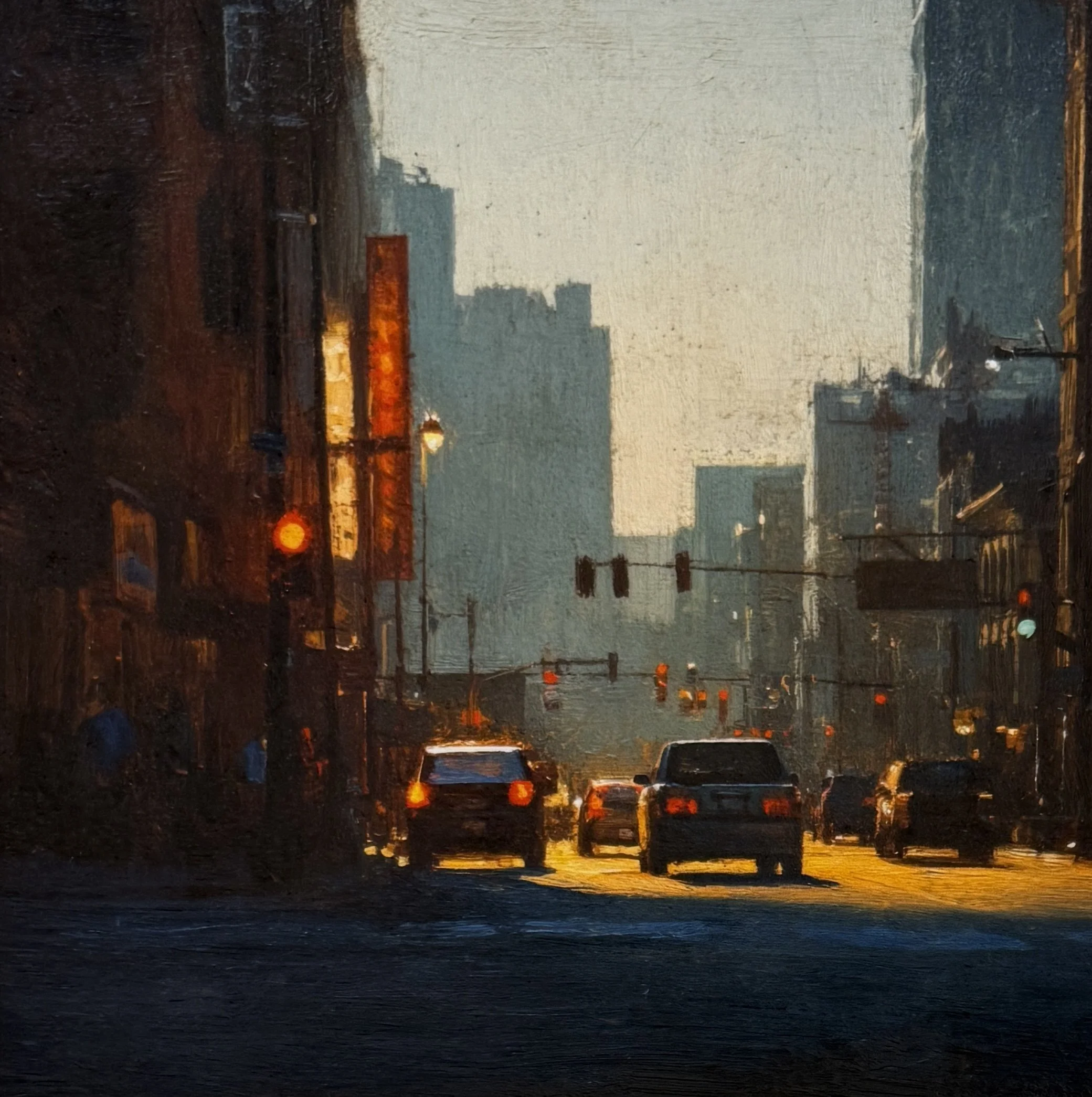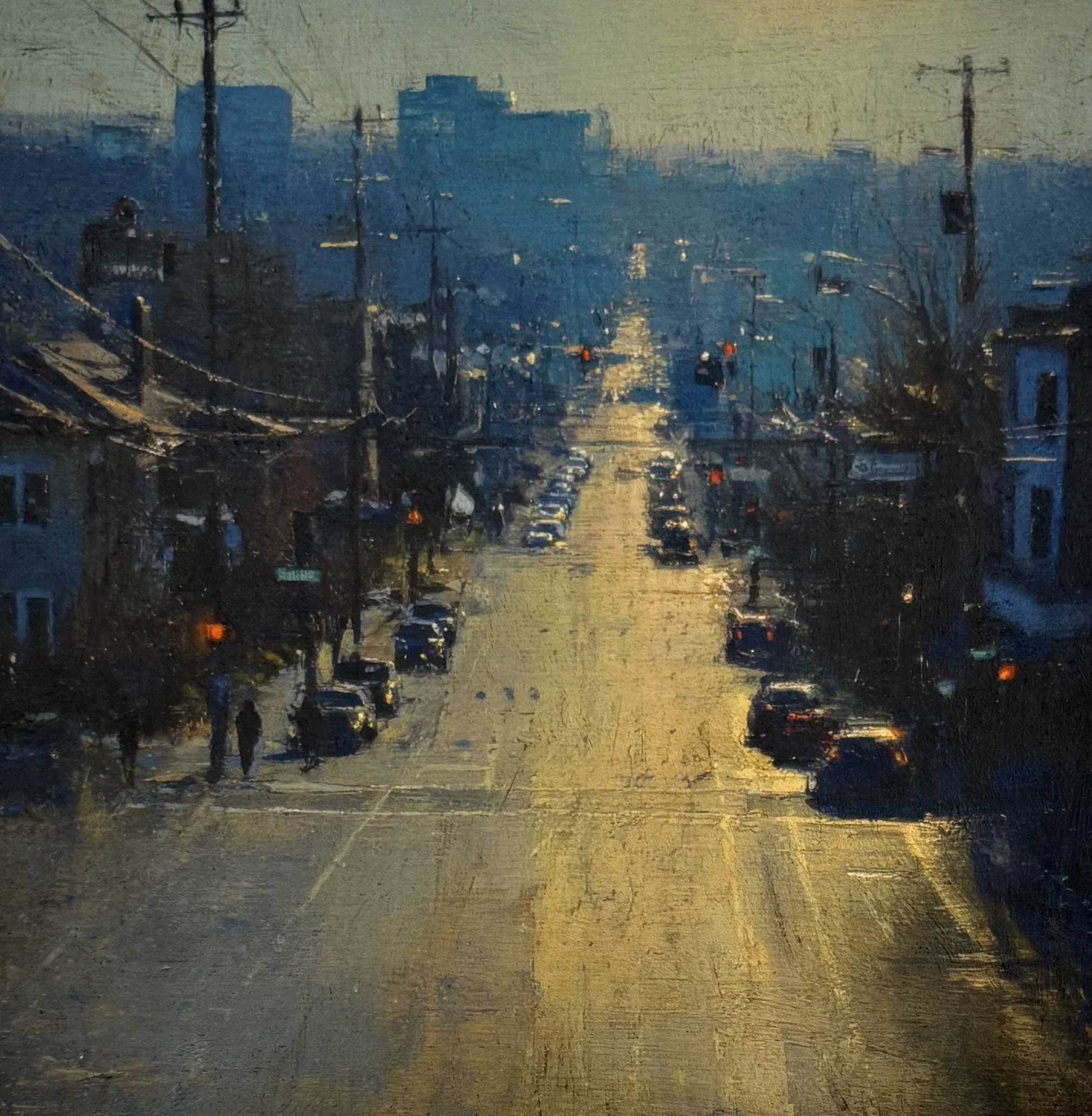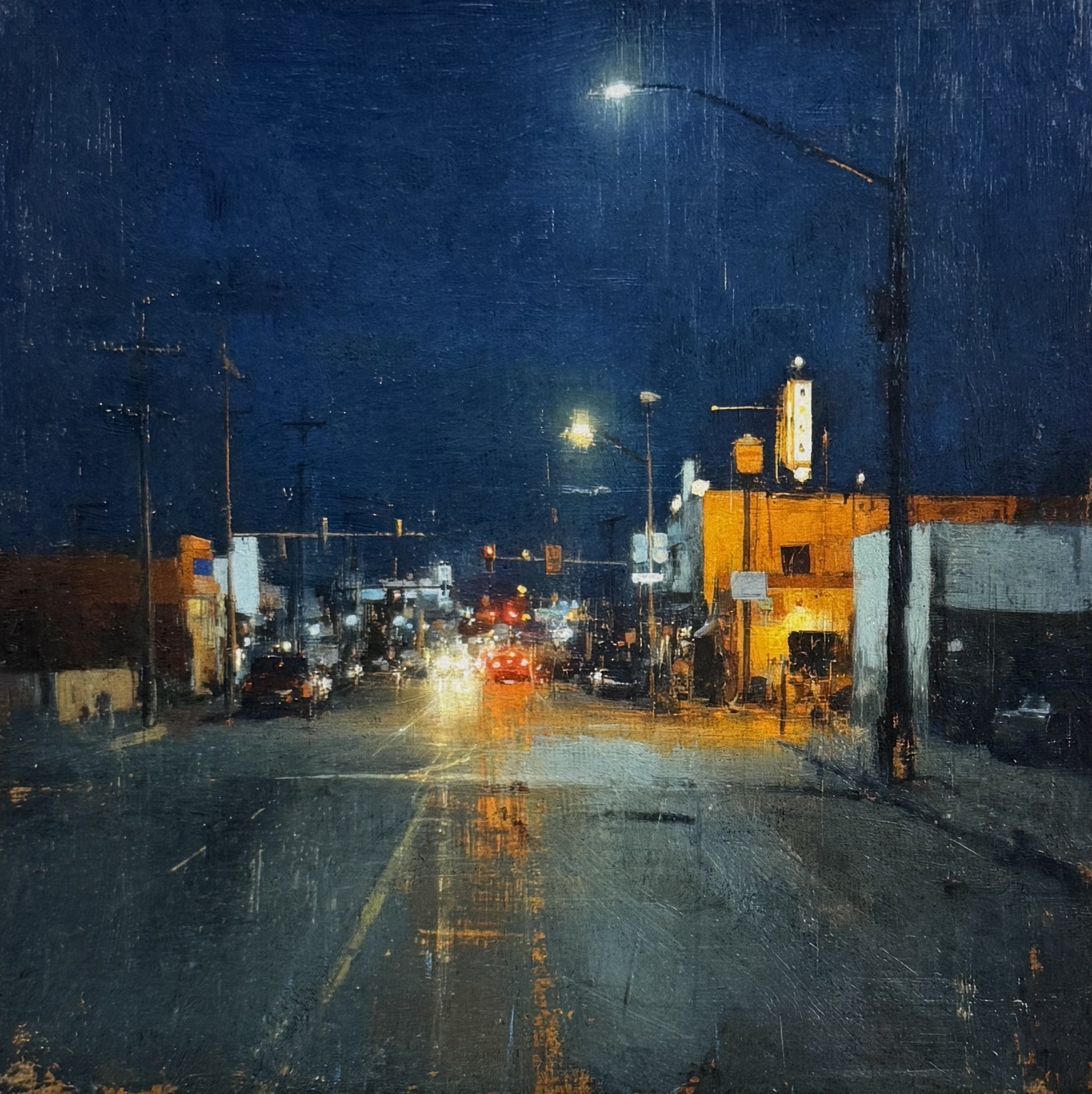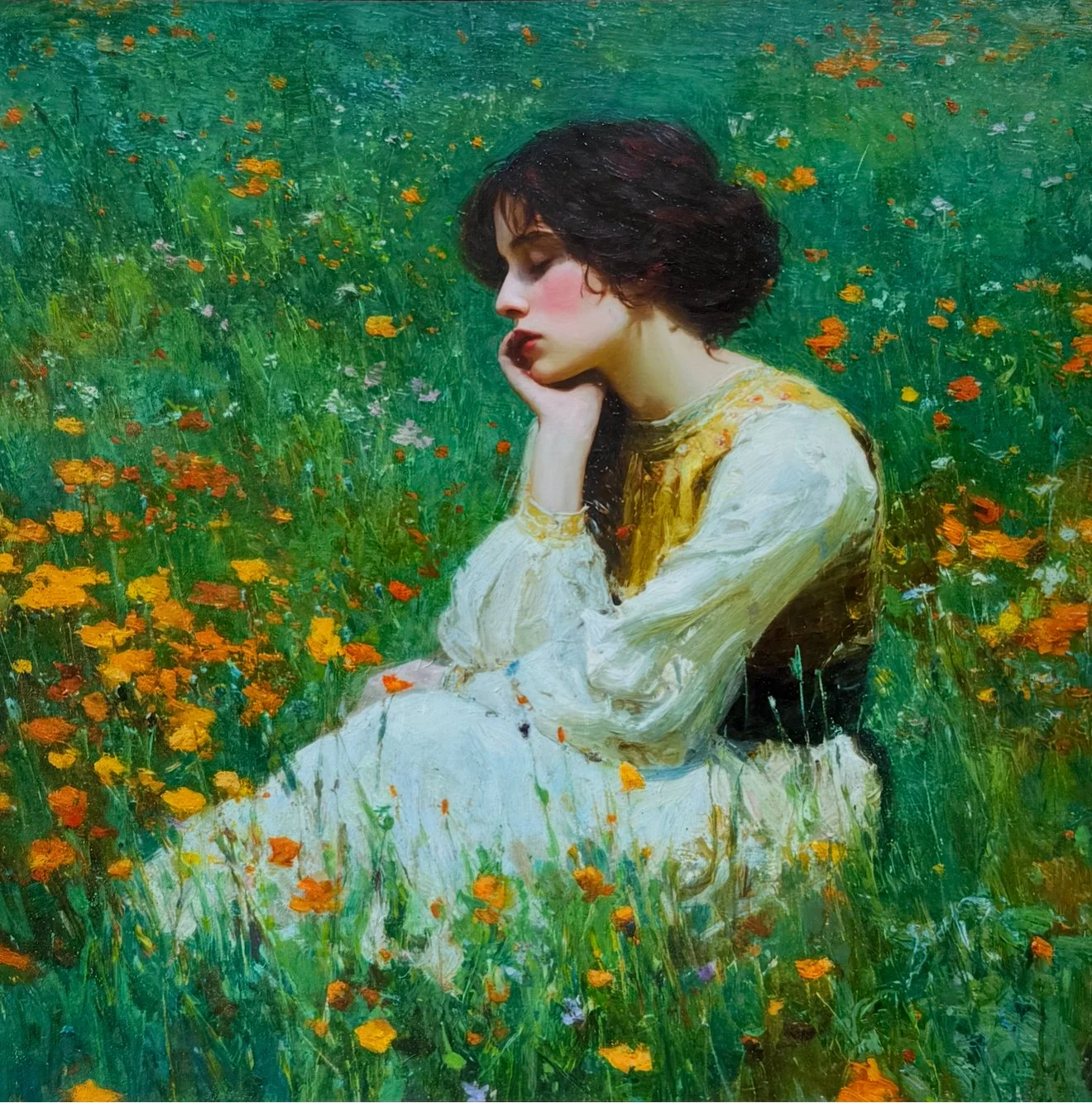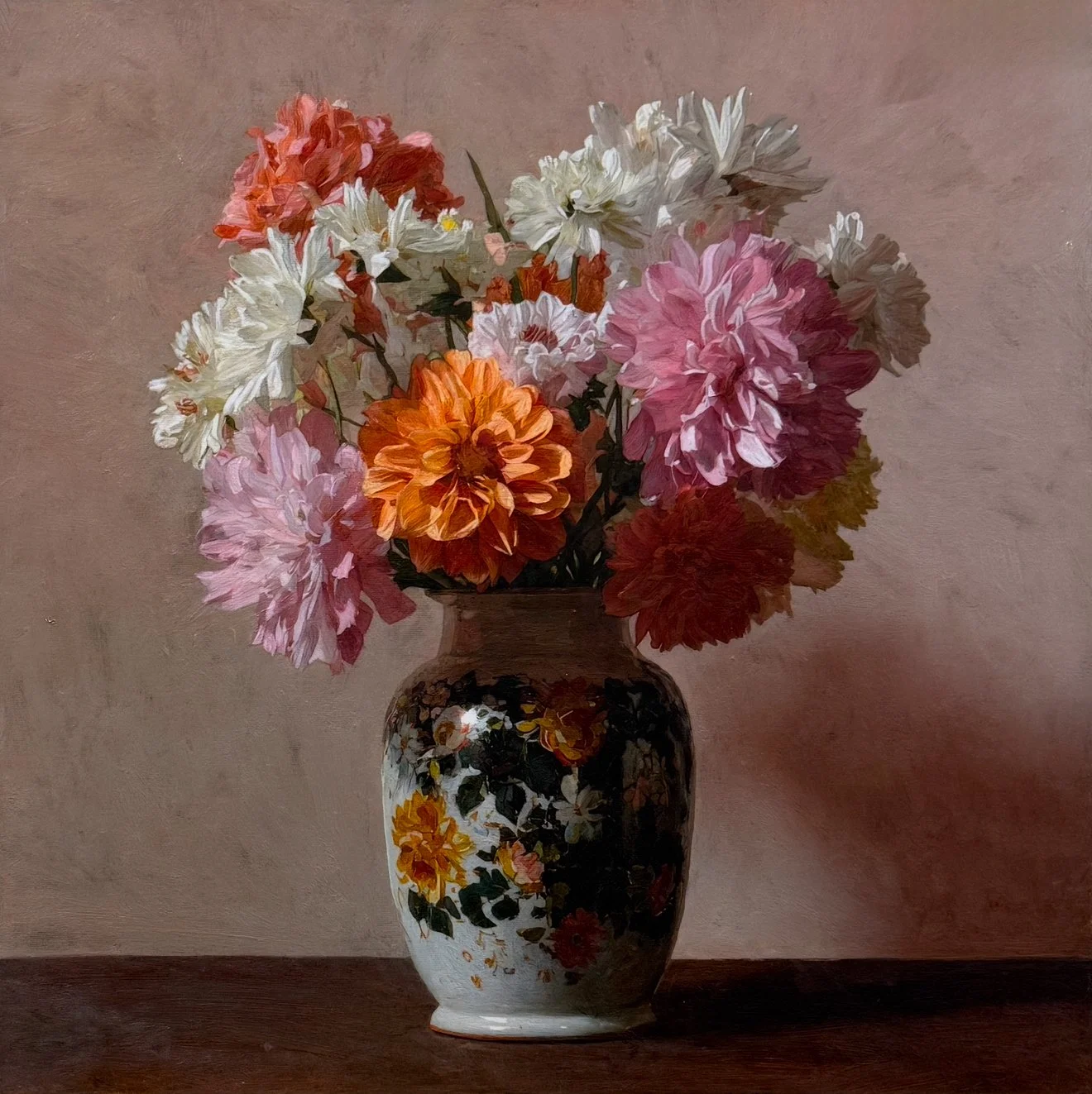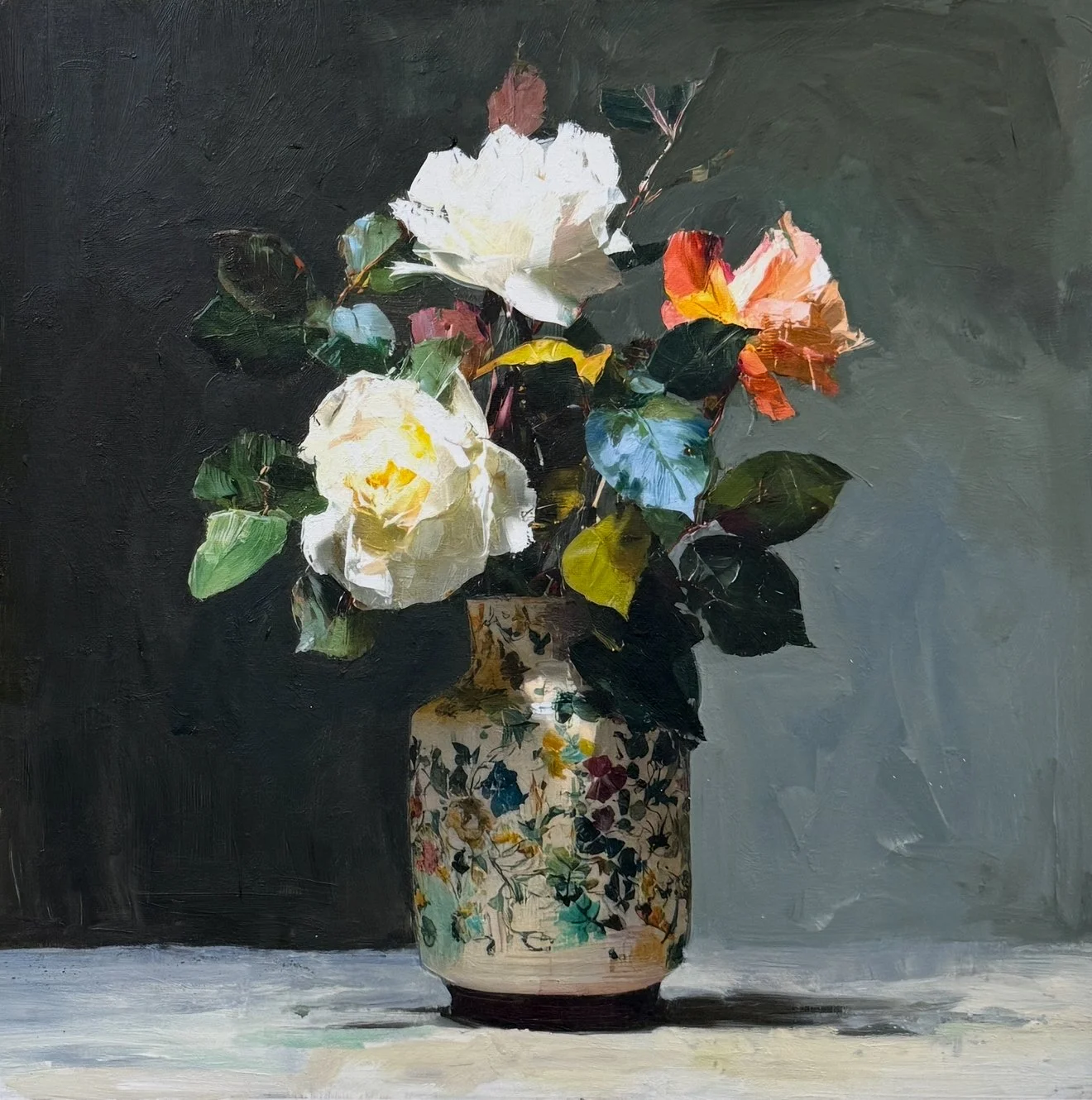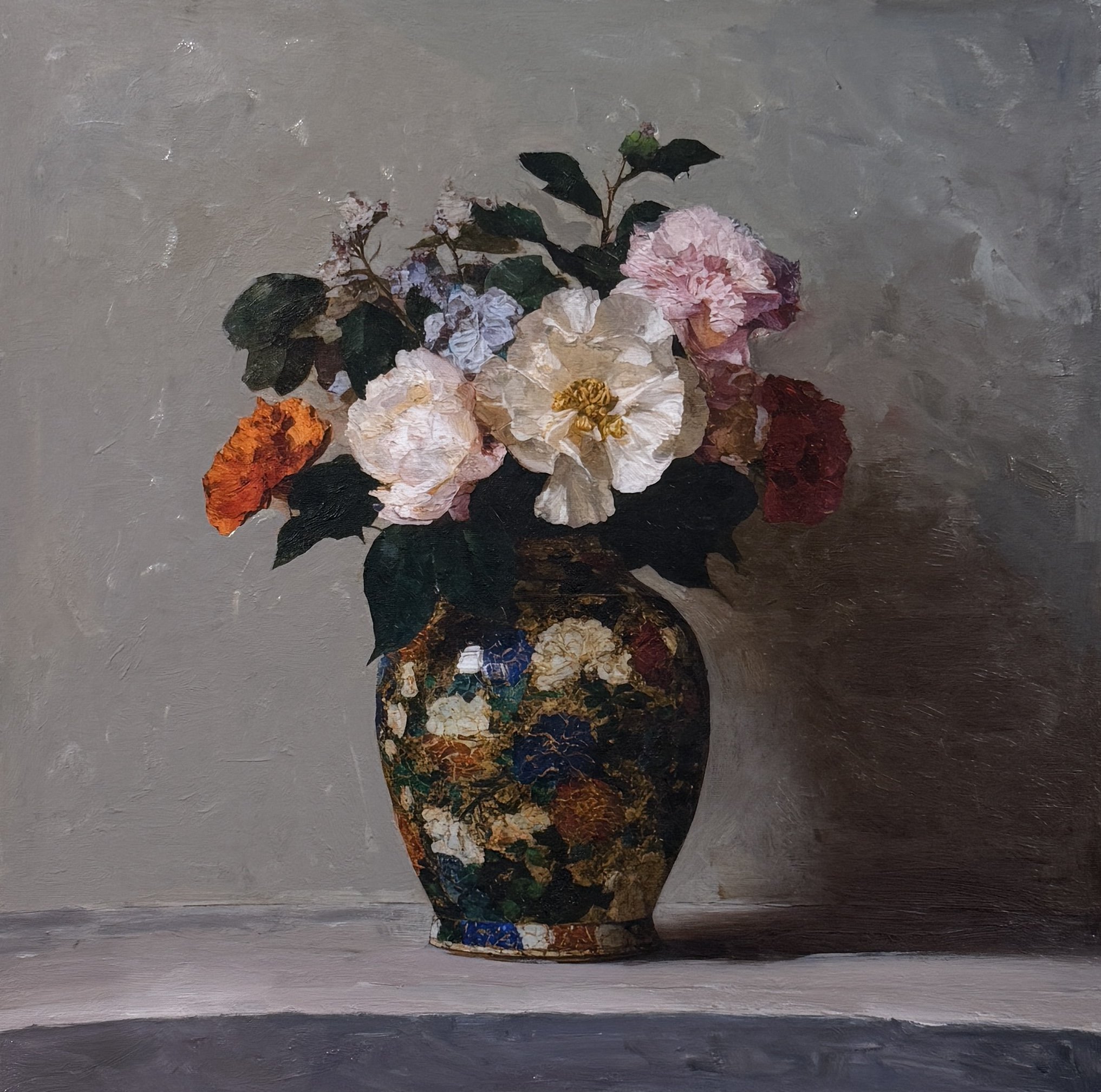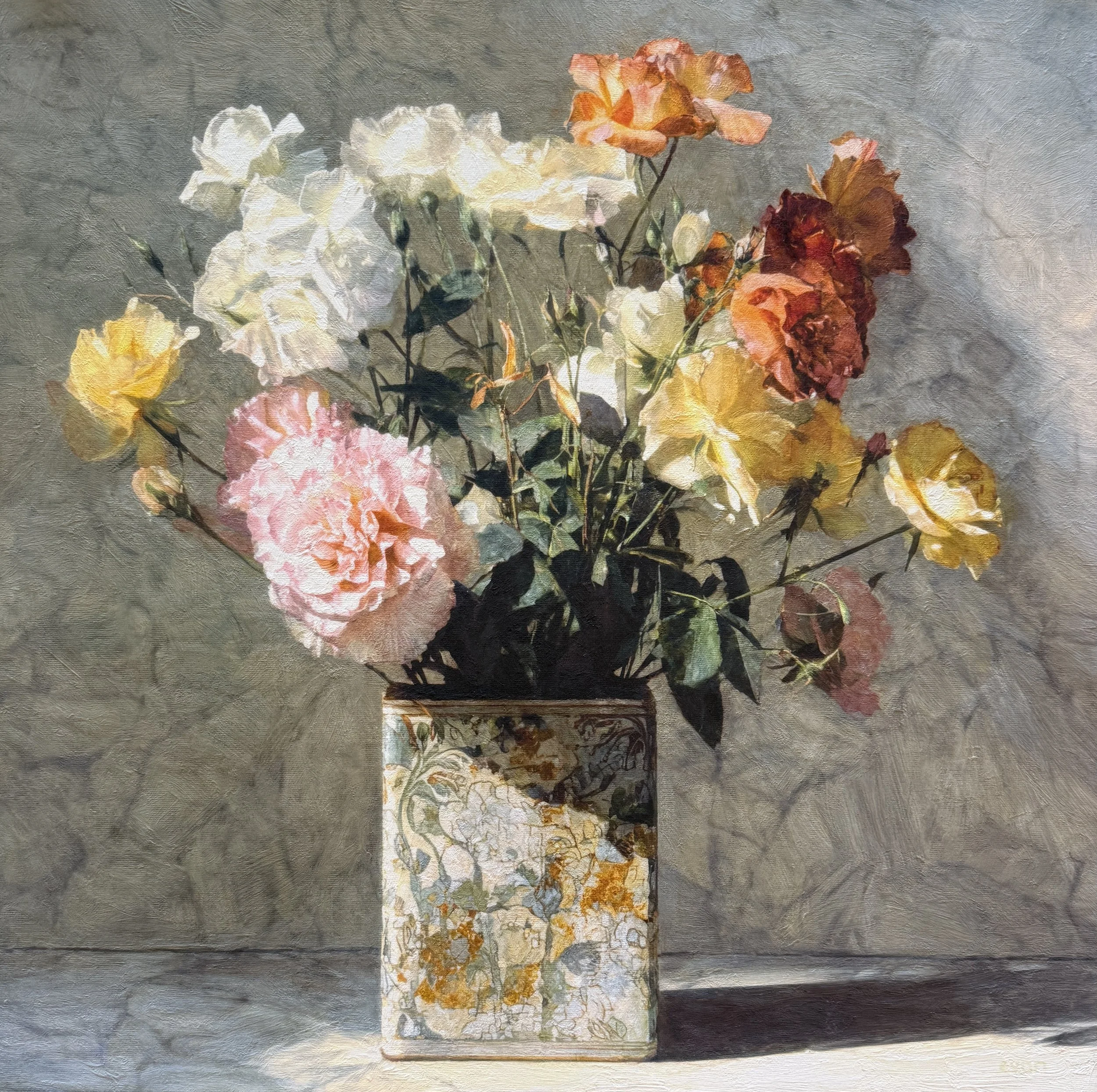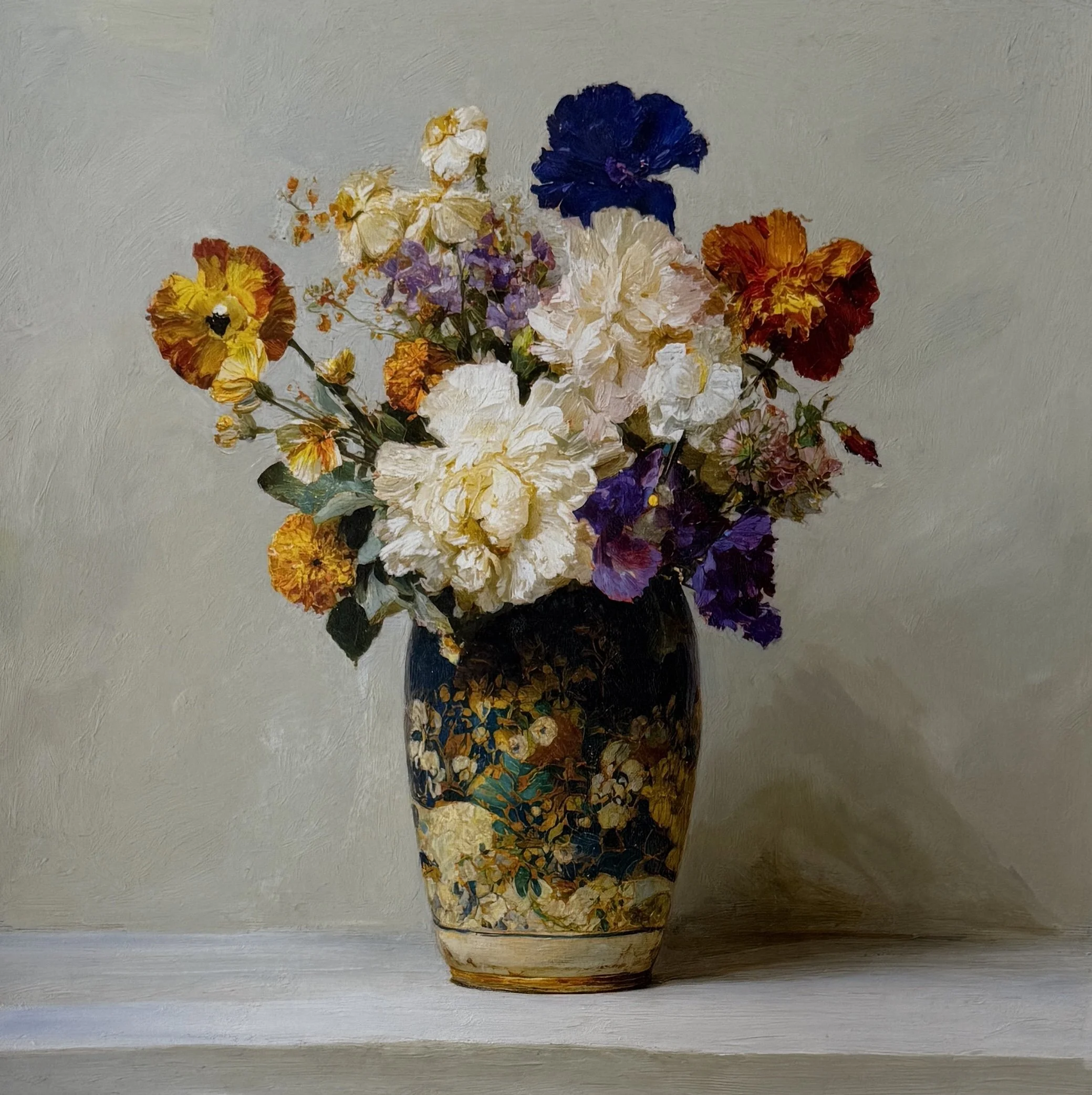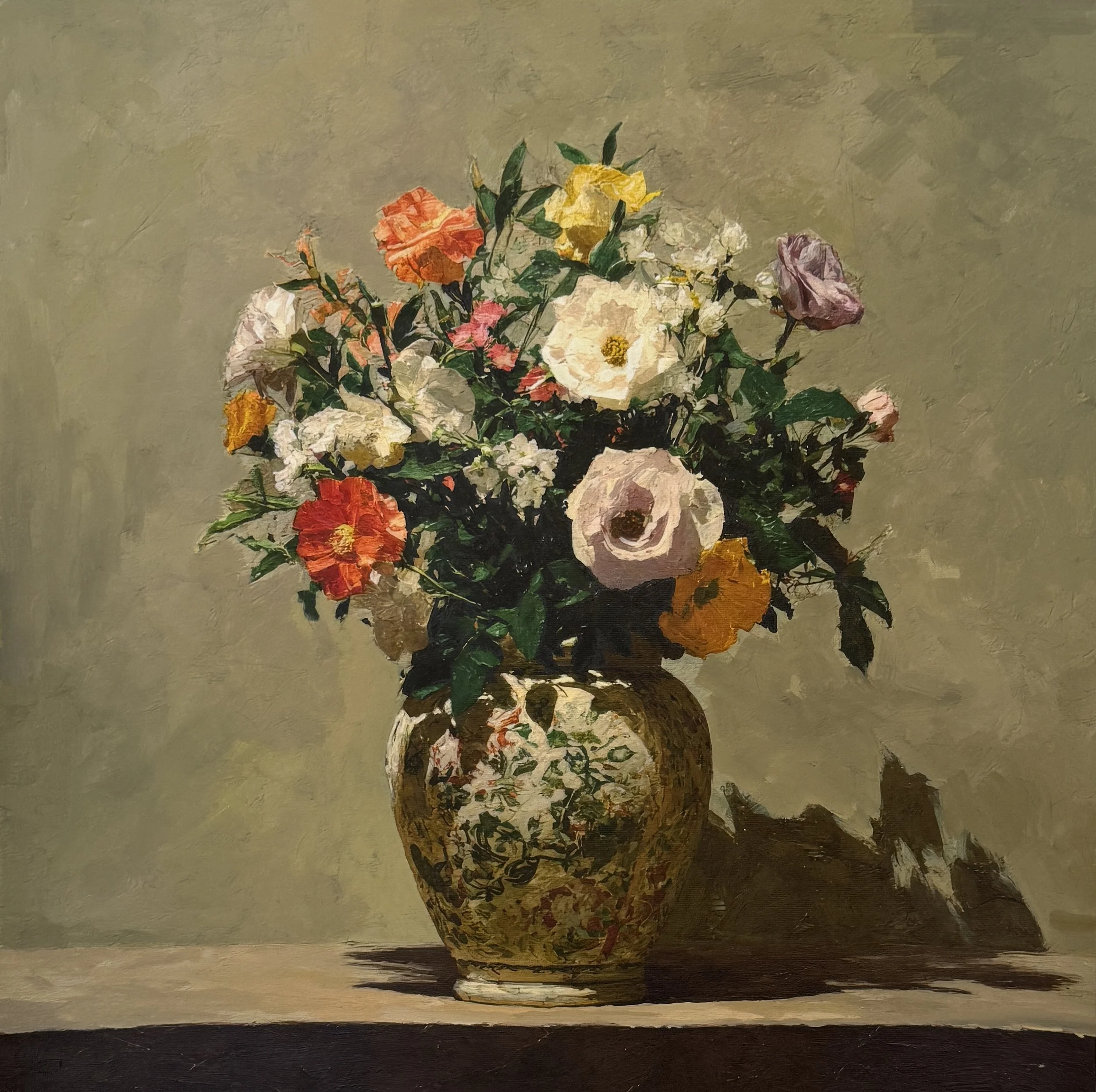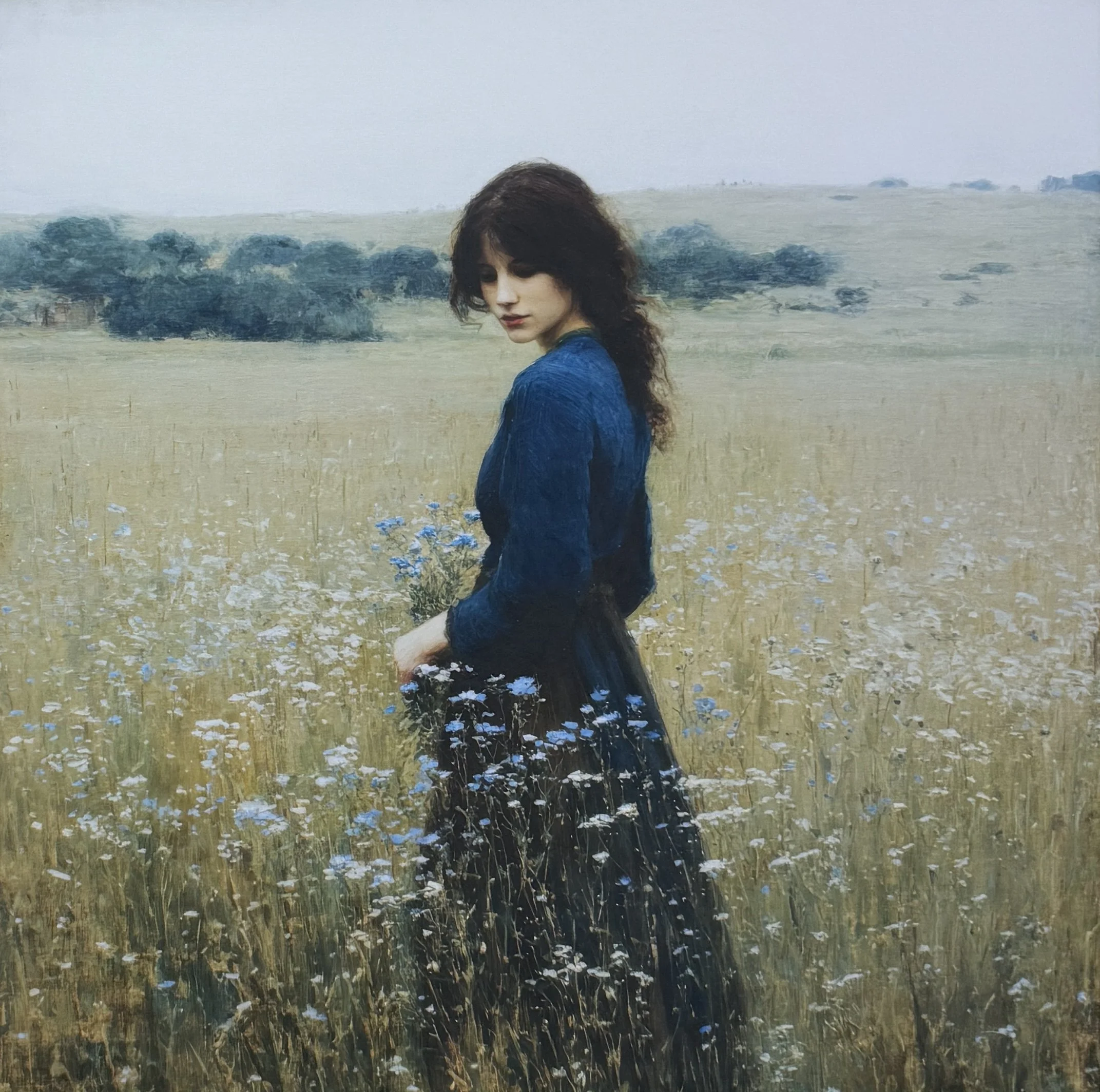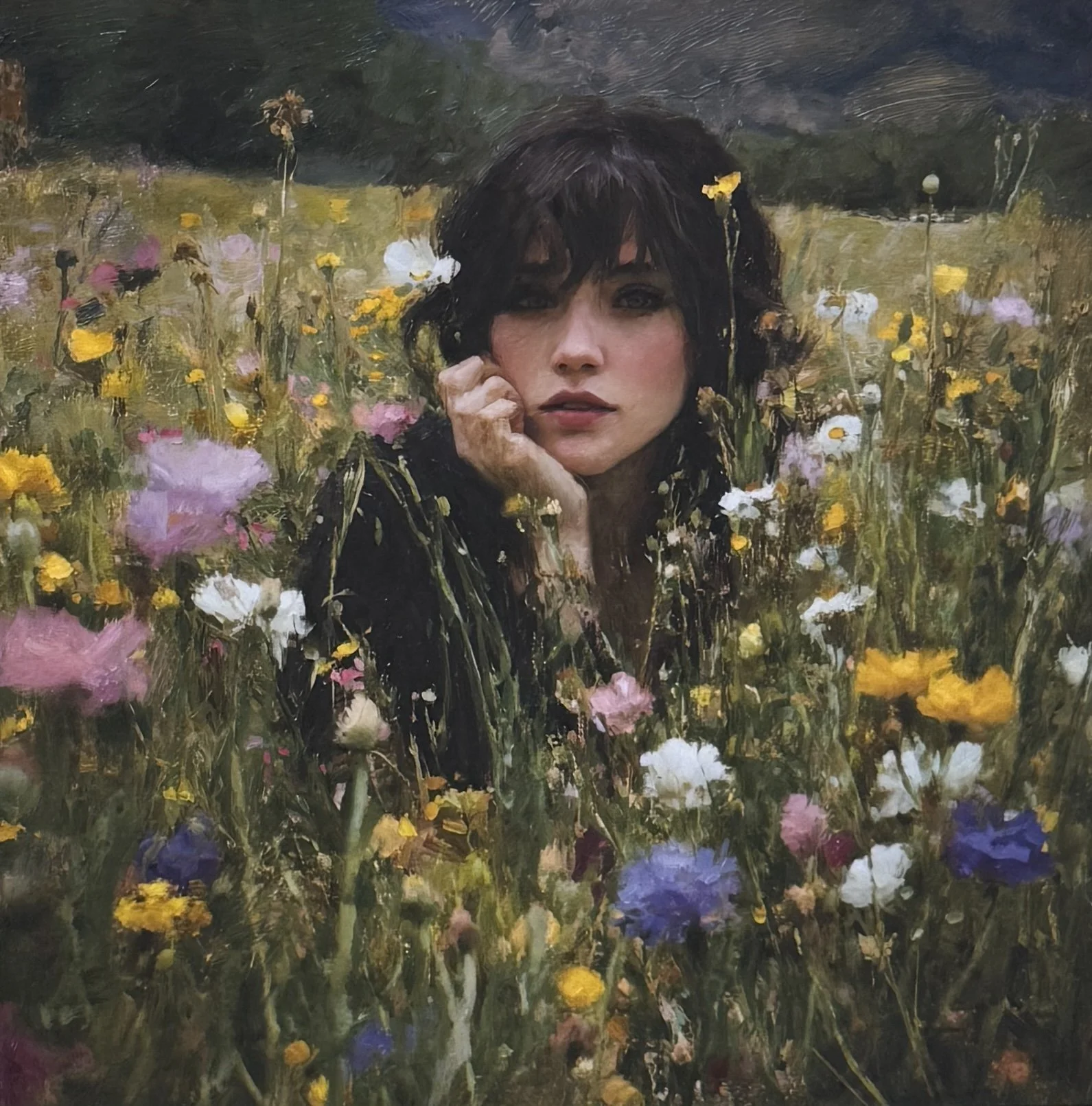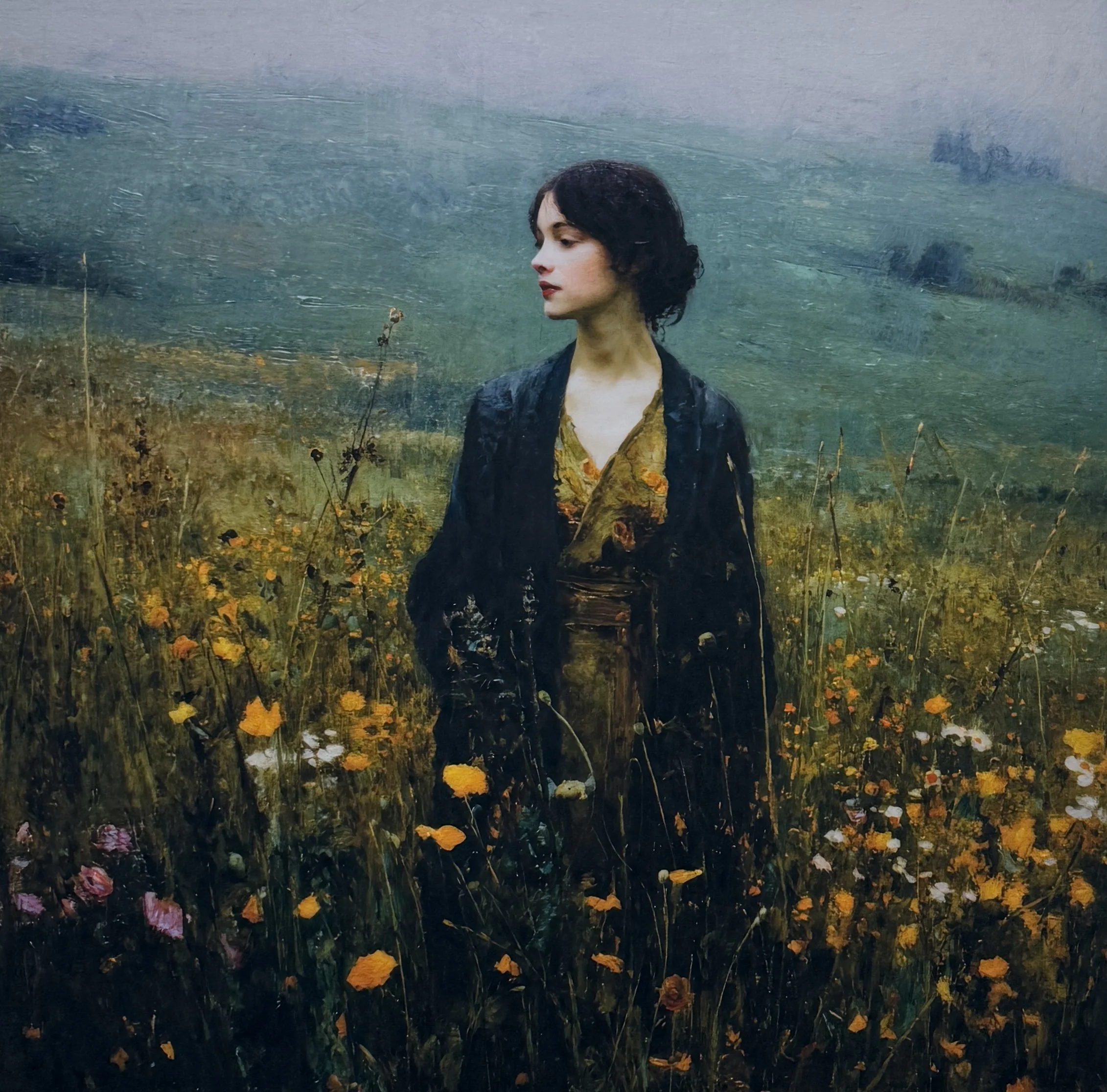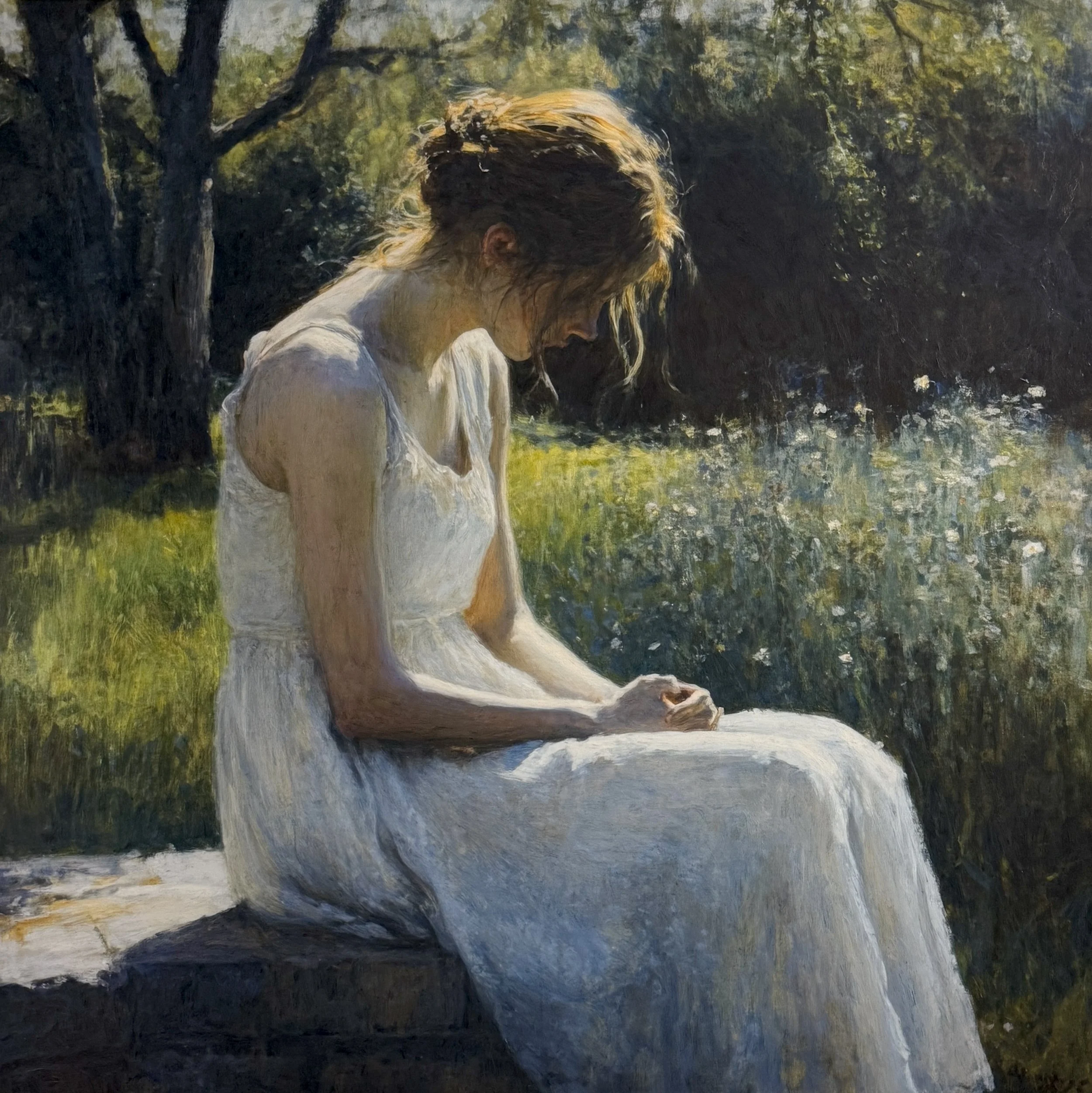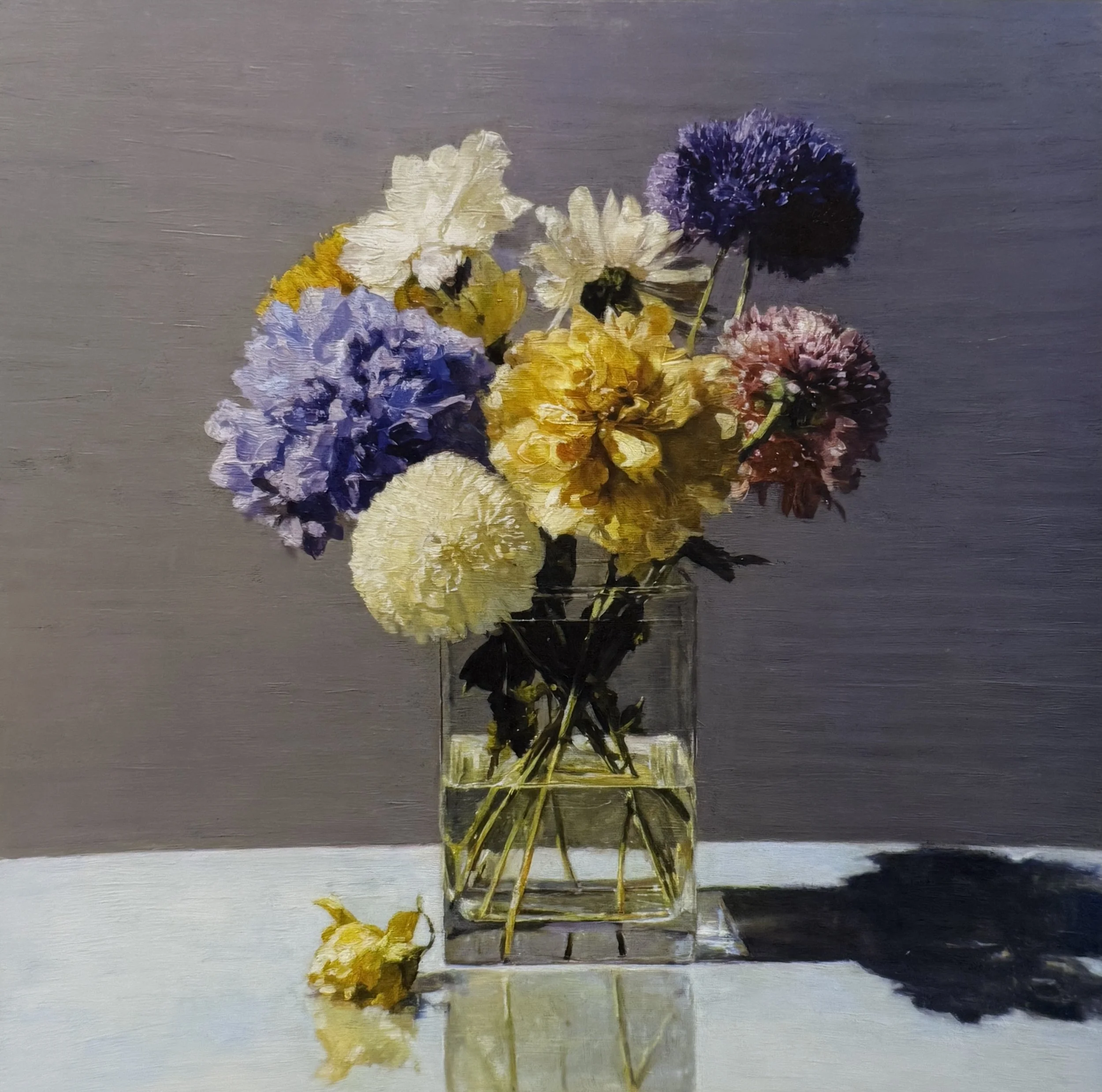REFLECTIONS OF IMPERMANENCE
The surface is a field of negotiations. The painting navigates this shifting and sometimes convoluted terrain between control and chance, a tension that mirrors the unpredictability and intricacy of everyday life. This dialectic is not just a method but a mode of seeing — an entry point into a visual language built from materials in conversation with one another.
I begin with a ground of gesso and pumice, coarse and resistant, functioning both as a record of the initial impression, a compositional sketch, and a physical landscape — scarred, gritty, and alive. Over this surface, materials accumulate: transparent washes of acrylic drift like weather, pen and ink lines carve out clarity, and oil settles with weight and finality or scatters across the surface like wildflowers.
Each medium asserts its own voice — each interruption, each gesture negotiated — until the surface resolves into a fragile harmony. Lines of precision rest beside splatters of paint, where edges dissolve, and shapes emerge from vague shadows only to recede again. The surface holds the presence of the figure and also their solitude in smears of pink and grey pigment. It holds the weight of intention and the inevitability of the accident. It hold this space in a way where distinctions between intention and the accident, material and meaning, begin to dissolve and become indecipherable.
The work is not about the image alone, but the act of balancing contradiction: intention and accident, permanence and impermanence, thought and touch.
